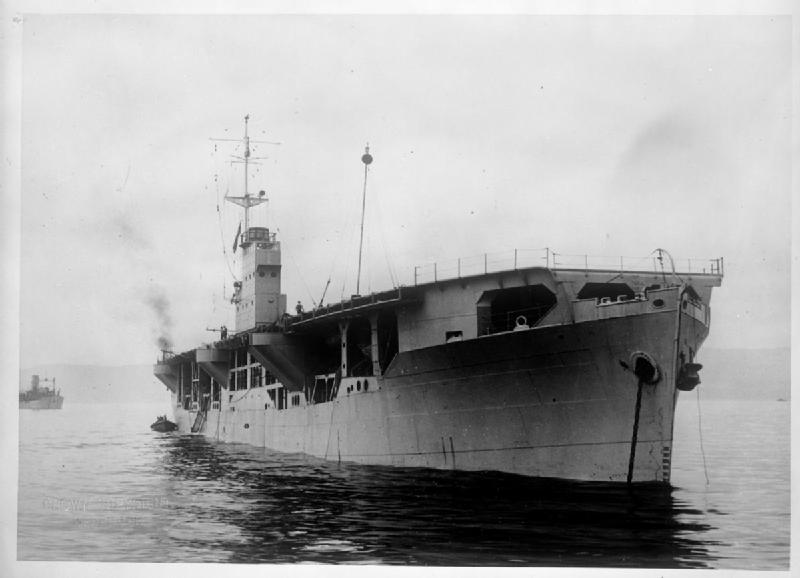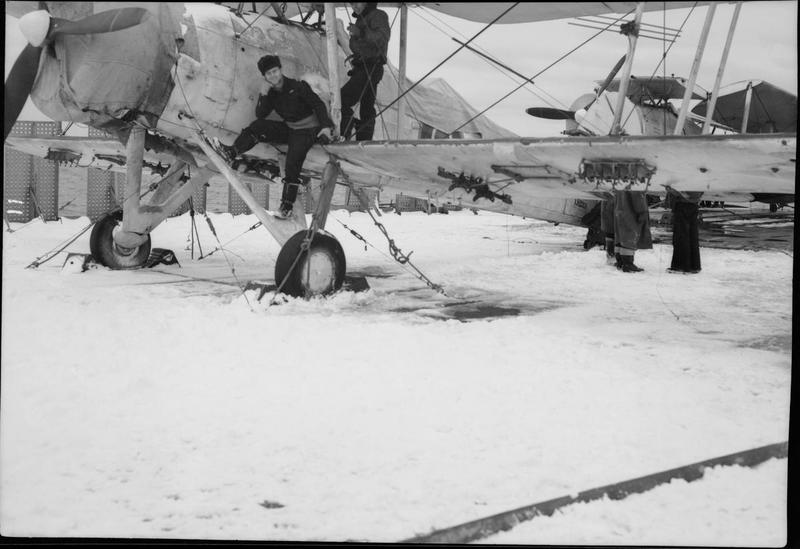One problem with the CCF Gregor Fighter was its dismal visibility. The upper gull wings were in exactly the wrong place for seeing where you are going while landing-on. The configuration is odd considering that Gregor had previously worked for Seversky??????
On the “Panic Fighter 1938” thread, Inproposed a monoplane Gregor Fighter specialized for landing-on escort carriers HMS Nabob and Puncher. With the RCNVR protecting Western Atlantic, it is logical for the RCN to have their own FAA.
AZ Canadian F4F.
Either way they would need to better fair the Gregor Fighters’ bubble canopy into the vertical fin. Full canopies and cockpit heat are mandatory for patrolling the North Atlantic ... and the more windows on the side or belly the better.
Add a rear view mirror. I notice it does not have one.
A monoplane would have an advantage in accumulating less airframe ice. The fewer struts and wires, the less ice. Why did the RN FAA never adopt a STOL monoplane replacement for Swordfish?
The Albacore used the wrong wing chord plan and was underpowered.
In 1939, the only similar airplane British service was the STOL Westland Lysander. Lysanders proved too vulnerable to fly over Europe in daylight. Lysander would need a revised pitch/elevator trim system for go-around.
Lysander MARK iii
General characteristics
Crew: One, pilot
Capacity: 1 passenger (or observer)
Length: 30 ft 6 in (9.29 m)
Wingspan: 50 ft 0 in (15.24 m)
Height: 14 ft 6 in (4.42 m)
Wing area: 260 ft² (24.2 m²)
Empty weight: 4,365 lb (1,984 kg)
Max. takeoff weight: 6,330 lb (2,877 kg)
Powerplant: 1 × Bristol Mercury XX radial engine, 870 hp (649 kW)
Performance
Maximum speed: 212 mph (184 knots, 341 km/h) at 5,000 ft (1,520 m)
Range: 600 miles (522 nmi, 966 km)
Service ceiling: 21,500 ft (6,550 m)
Climb to 10,000 ft (3,050 m): 8 min
Take-off run to 50 ft (15 m): 305 yards (279 m)
Armament
Guns: Two forward-firing .303 in (7.7 mm) Browning machine guns in wheel fairings and two more for the observer
Bombs: Four 20 lb (9 kg) bombs under rear fuselage and 500 lb (227 kg) of bombs on stub wings if fitted.
Perhaps 110 Squadron RCAF could have flown their Lysanders from Dartmouth and later from escort carriers.
Actually, not a bad idea for a MAC as long as you hardstand it with no strike below requirement!
That auto gyro suggestion is amusing. Even 1930s vintage autogiros could pre-rotate their main rotors for almost vertical takeoffs. With a 30 knot wind across the deck, they could land almost vertically.
Who cares if autogyros could carry torpedoes or depth charges? The primary armament installed on convoy escort aircraft was their radios used to call in escort corvettes and the other strikers to harass U-Boats.
Speaking of armament ..... how high did FW200 Condors patrol?
Would a “Shrage Musik” 20 mm cannon chase them off?
The stupid: etc...
FW Condors would patrol below the North Atlantic cloud layer, about 3000-5000 meters altitude and look for convoy wakes.
Just low enough to be easy prey for Hudsons. And fragile to go into the drink if a pair of .303 Brownings from the Hudson ventilated the cockpit or a wing spar inboard the outer engine nacelle.






